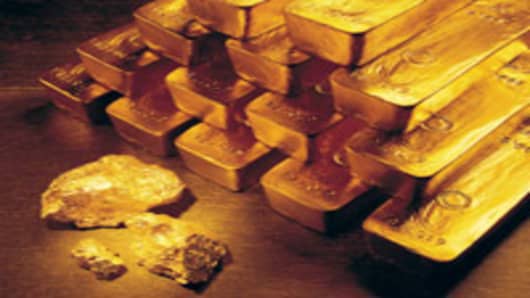Jim Bower, president of Bower Trading Inc. also expects a relatively steady performance from commodities over the next six to nine months.
“What I am looking for in this market right now is a healing mechanism,” says Bower, alluding to the boom-and-bust cycle of the past year.
Bower says investors are now working to “cycle out toxins” and discover true prices for the actual commodities. During such a phase, prices often run up to the top of their trading range and then fall back down until they are finished healing, he says.
That said, all commodities are not created equal, so to speak. Here’s how Worah and Bower see certain groups playing out.
Natural Gas: Worah is most positive on natural gas, saying it has been one of the worst performing groups as investor demand fell off a cliff at the same time that some fairly cheap new sources were discovered. With supply evening out, however, a bounce in prices is possible.
Crude Oil: Worah says supply has met demand, even though there is still a lot of crude out there. “I’m not bearish but I don’t think it’s going to explode to upside,” he says.
Grains and Soybeans: Bower believes these are among the most interesting right now, though future performance is tough to call. While there have been some recent cutbacks in supply, which bodes well for prices, a lot depends on future weather trends.
Industrial Metals: Copper and zinc have been doing very well, largely because of Chinese imports, says Worah, but aluminum is very abundant and easy to make, so avoid it.
Precious Metals: The price of gold most often rises and falls along with inflation expectations, says Worah, and there’s enough disagreement about that right now. Worah adds there’s likely to be a devaluation of paper assets, perhaps in a year or so, and that would boost real assets, including gold.
Pork and Cattle: The recent swine flu outbreak has had a short-term negative impact on pork and to some degree beef, but Bower believes many people are interpreting the situation incorrectly, “You can’t contract this virus through pork, particularly, cooked pork.”
If commodities sound right for you, Worah recommends an asset allocation of 3-5 percent.
The best options for retail investors are diversified baskets of commodities such as mutual funds or exchange traded funds, ETFS, which tend to pose less risk than futures contracts traded on exchanges while offering a more direct play than the stock of commodity-focused companies.
Hilary Fazzone, a mutual fund analyst with Morningstar, says the primary commodity indices are the Dow Jones-UBS Commodity Indexes (group and individual), which are composed of actual commodities traded on US exchanges; and the S&P Goldman Sachs Commodities Index, which is a composite index of commodity sector returns
One of the commodity funds that Fazzone likes is the Pimco Commodity Real Return fund, managed by Worah. This fund uses swaps to get exposure to the Dow Jones Commodity Index and allocates some funds to a portfolio of TIPs. Fazzone says the fund has also been repackaged for the Harbor family of funds as the Harbor Commodity Real Return Strategy fund . It has the same holdings as the Pimco version, though it carries a lower expense ratio.
Another fund that Fazzone is keeping an eye on is the Oppenheimer Commodity Strategy Total Return Fund , which tracks the S&P Goldman Sachs Commodities Index. This fund also invests partially in fixed income. (After taking a big beating in riskier investments, it recently made its fixed income allocation more conservative.
There are also a handful of ETFs that represent broad baskets of commodities.
Probably the two ETFs that are most comparable to the mutual funds mentioned are the iPath Dow Jones AIG Commodity Index Total Return ETN and the iShares S&P GSCI Commodity ETF. Another popular commodities ETF is the Deutsche Bank Commodities ETF , which tracks the Deutsche Bank Liquid Commodity Index - Excess Return Optimum Yield.
ETFs are often a more cost effective option than comparable mutual funds. According to Fazzone, the average expense ratio of a mutual fund in Morningstar’s natural resource category is 1.45 percent (including both load and no load funds) while the expense ratio for DJP and GSG is 0.75 percent and DBC is 0.83 percent. (Note: Commission costs are incurred when you trade ETFs.)
Performance comparisons are also relevant. Actively managed mutual funds, however, have the potential for greater gains or losses, says Fazzone, because their portfolio managers are not only tracking an index but also making sub sector bets, while most ETFs simply track an index.
Investors, of course, need to make the usual investment analysis in picking funds, as well as learn about how commodities markets work. Prices can swing far and fast.
The commodities market, warns Bower, “can be dangerous and difficult to trade.”


